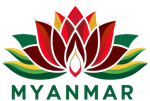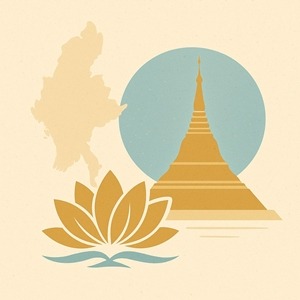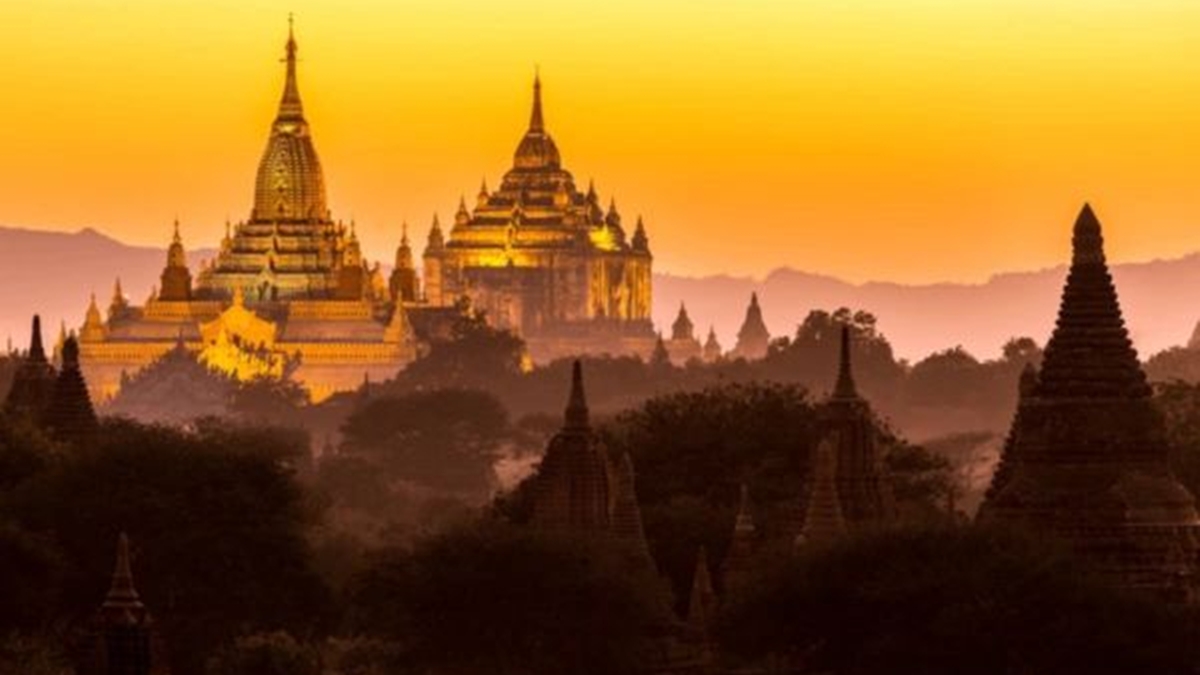
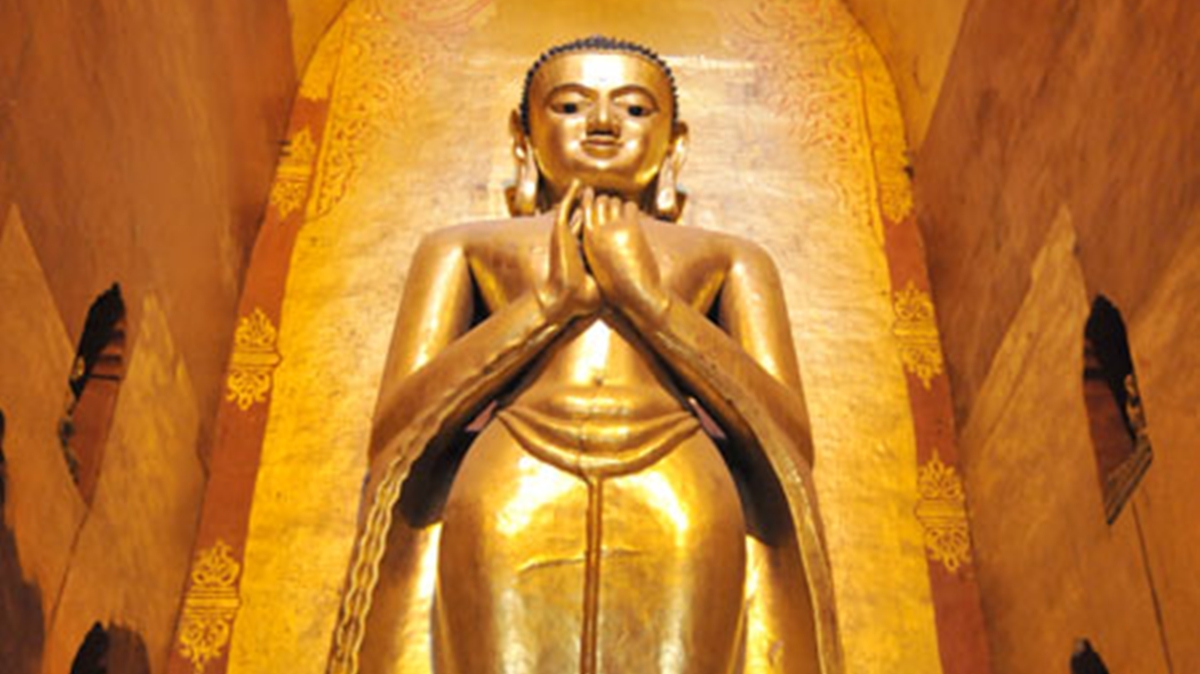
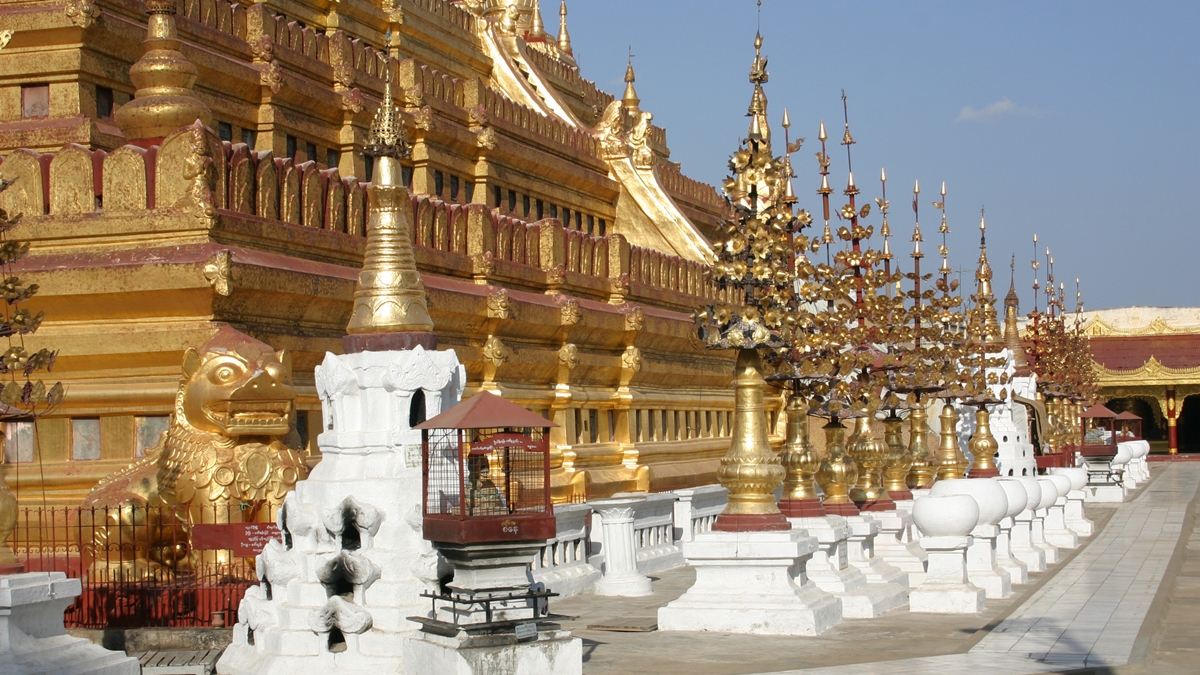
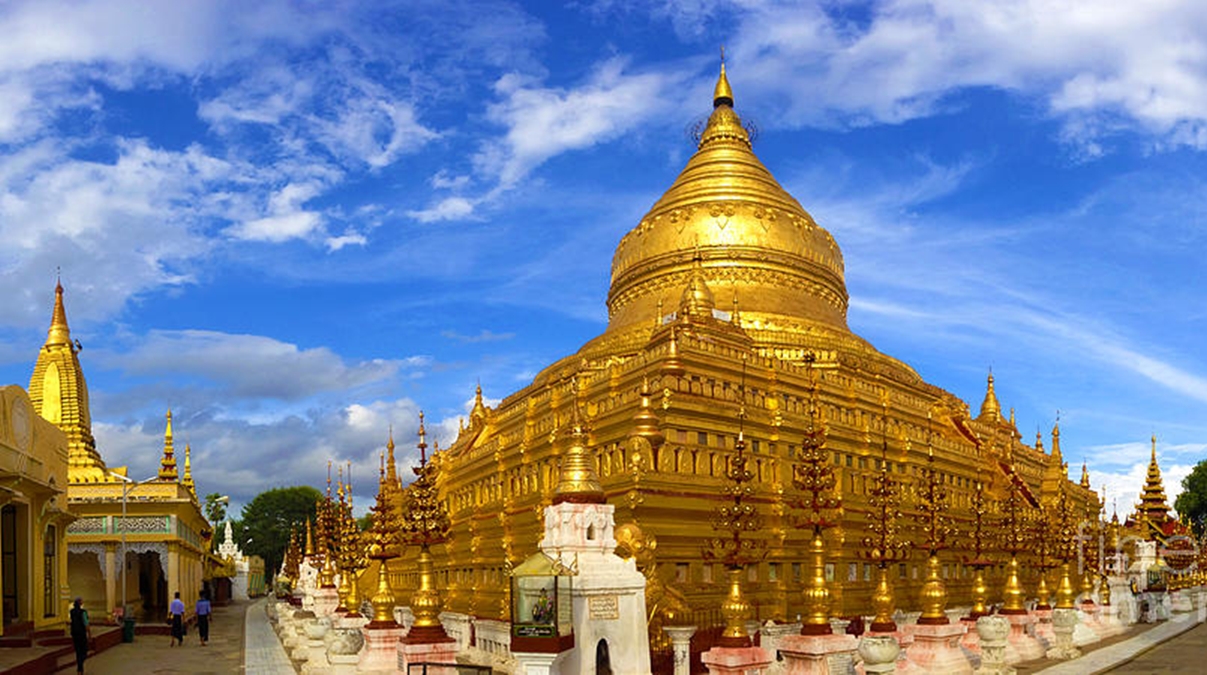
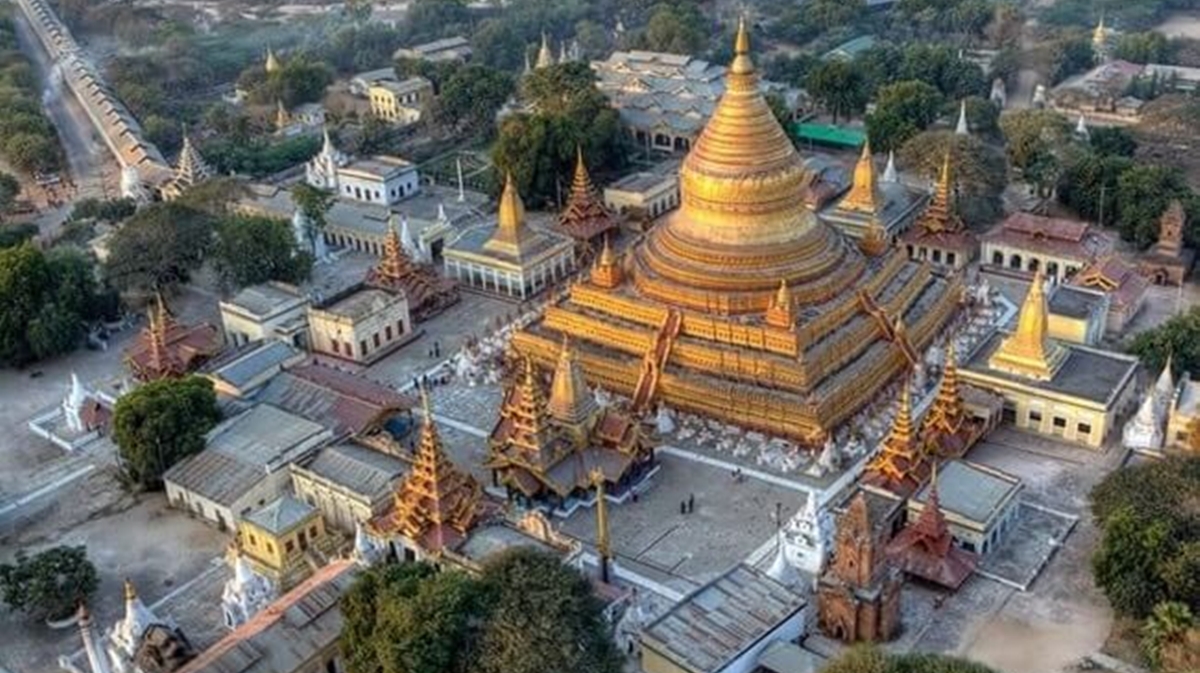
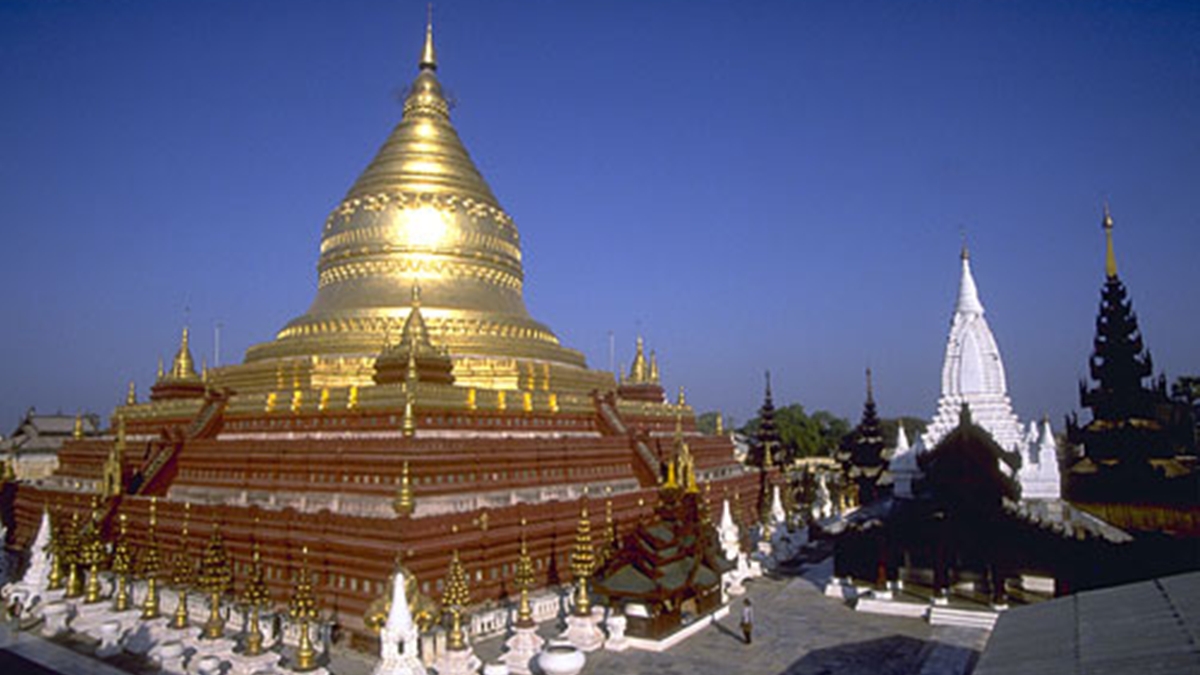

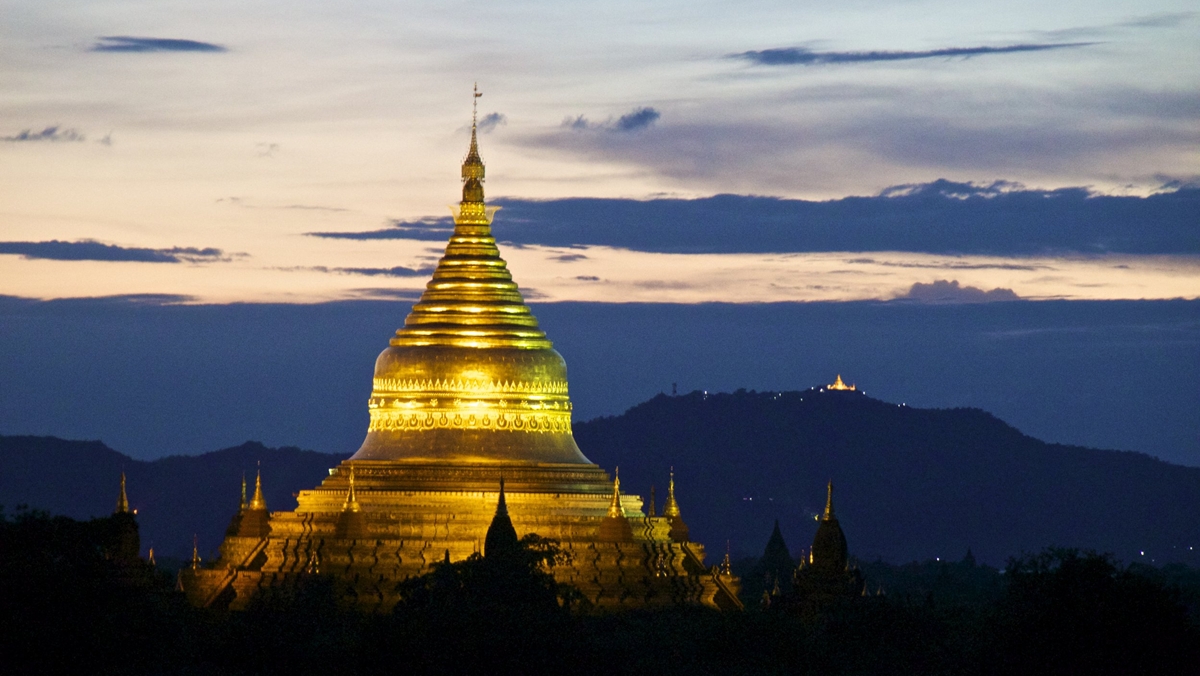
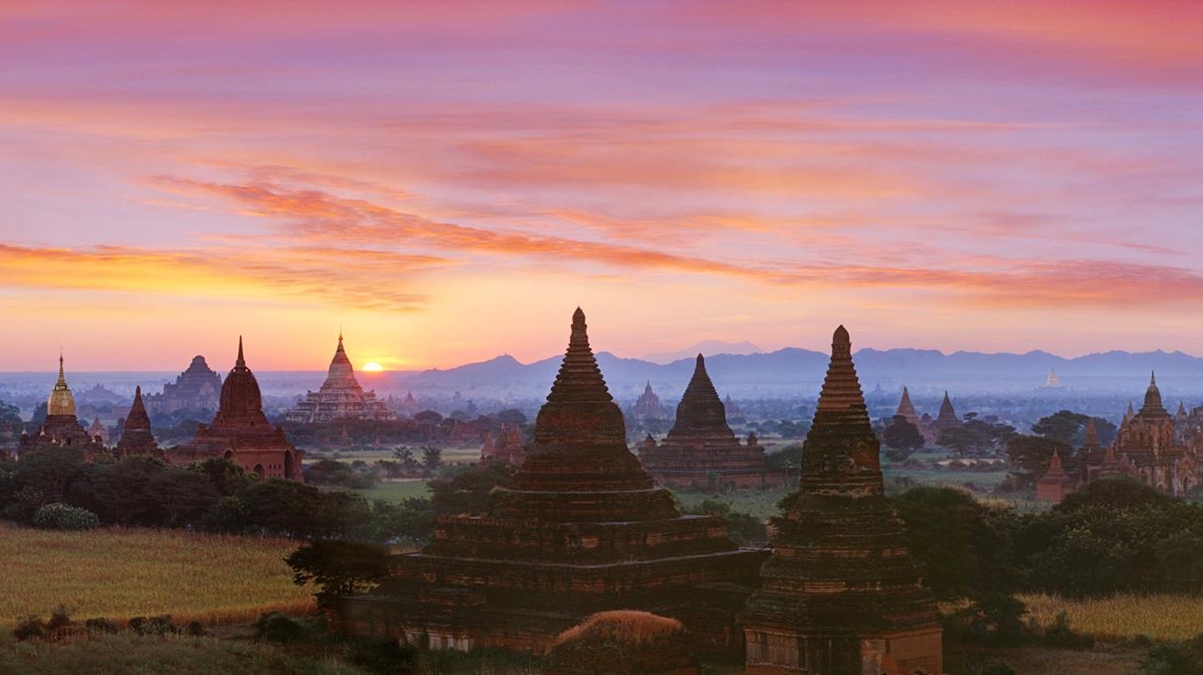
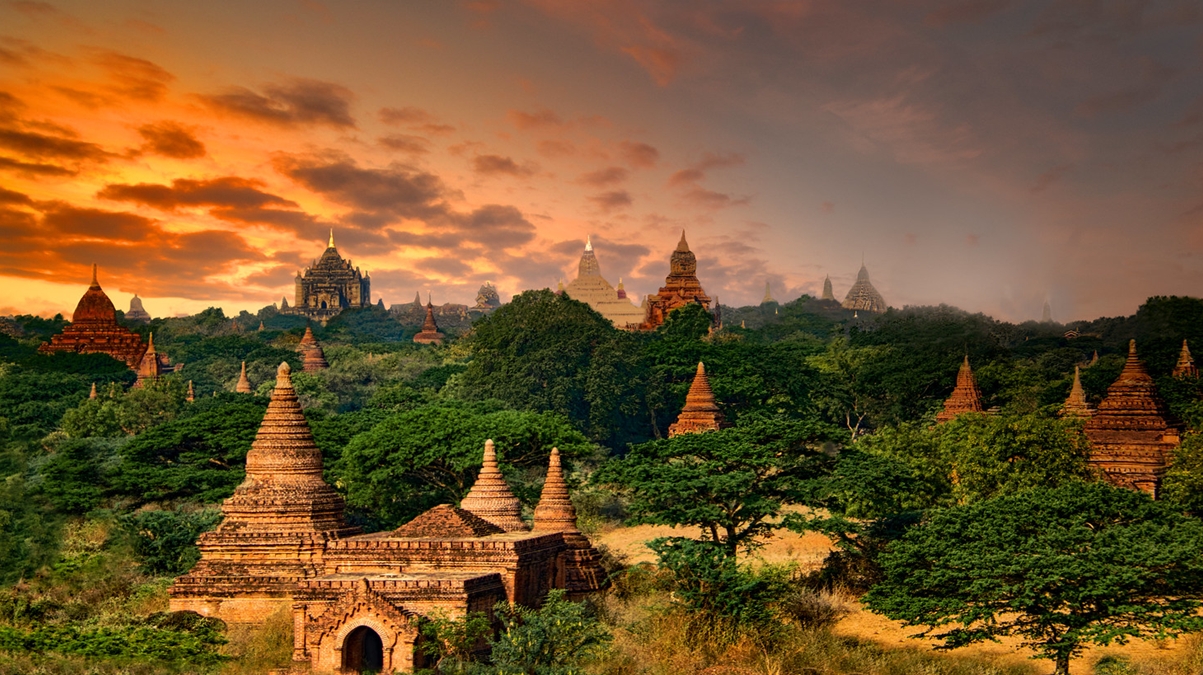
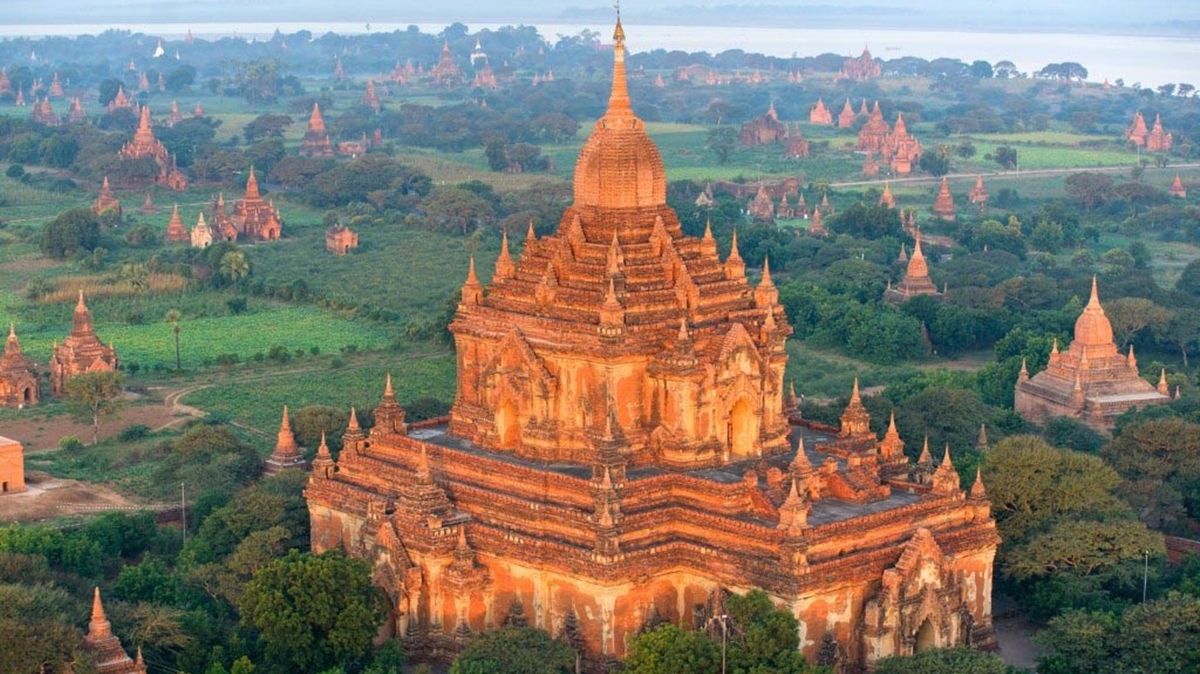
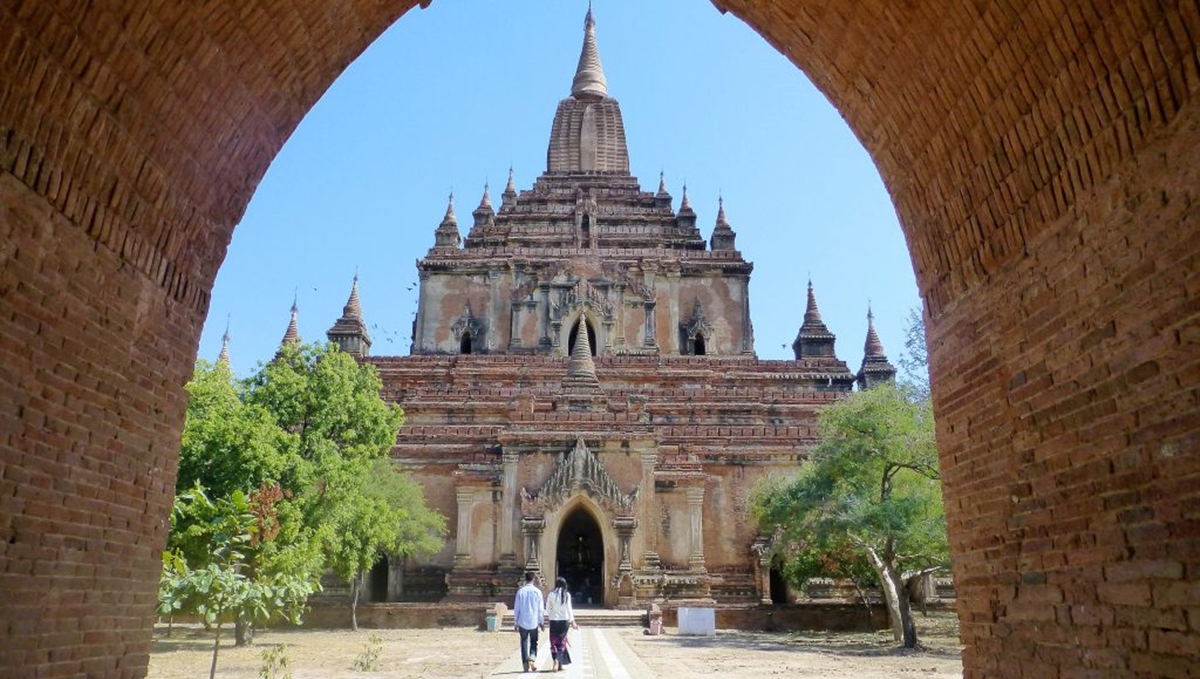
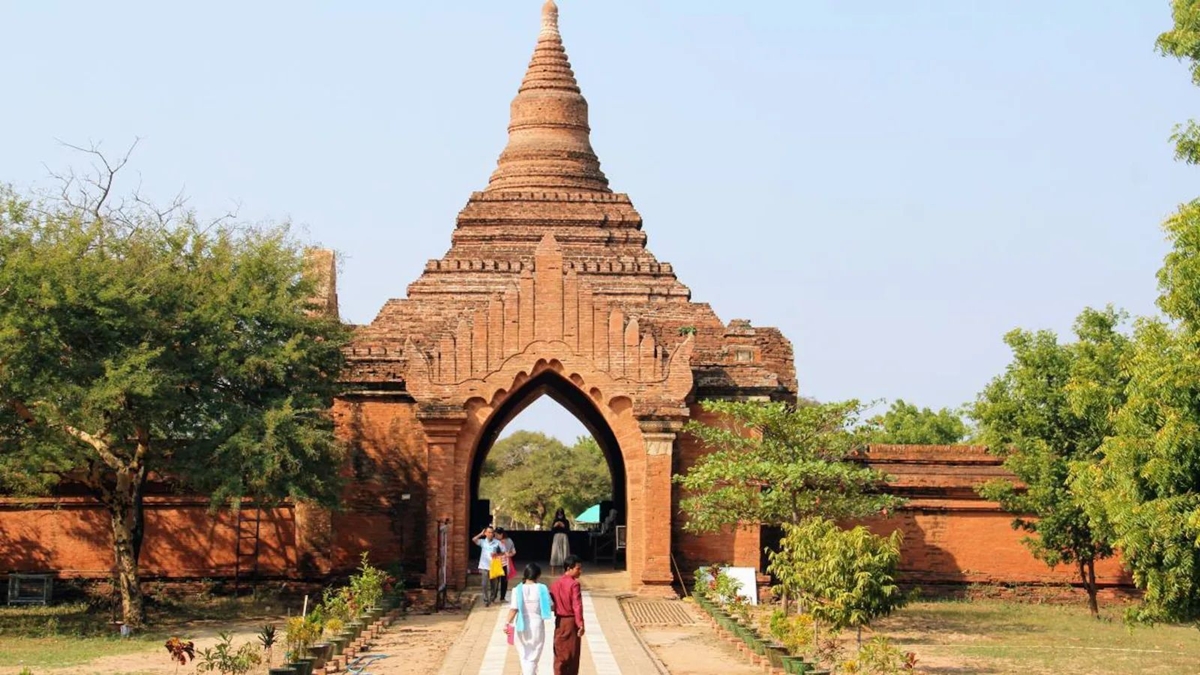
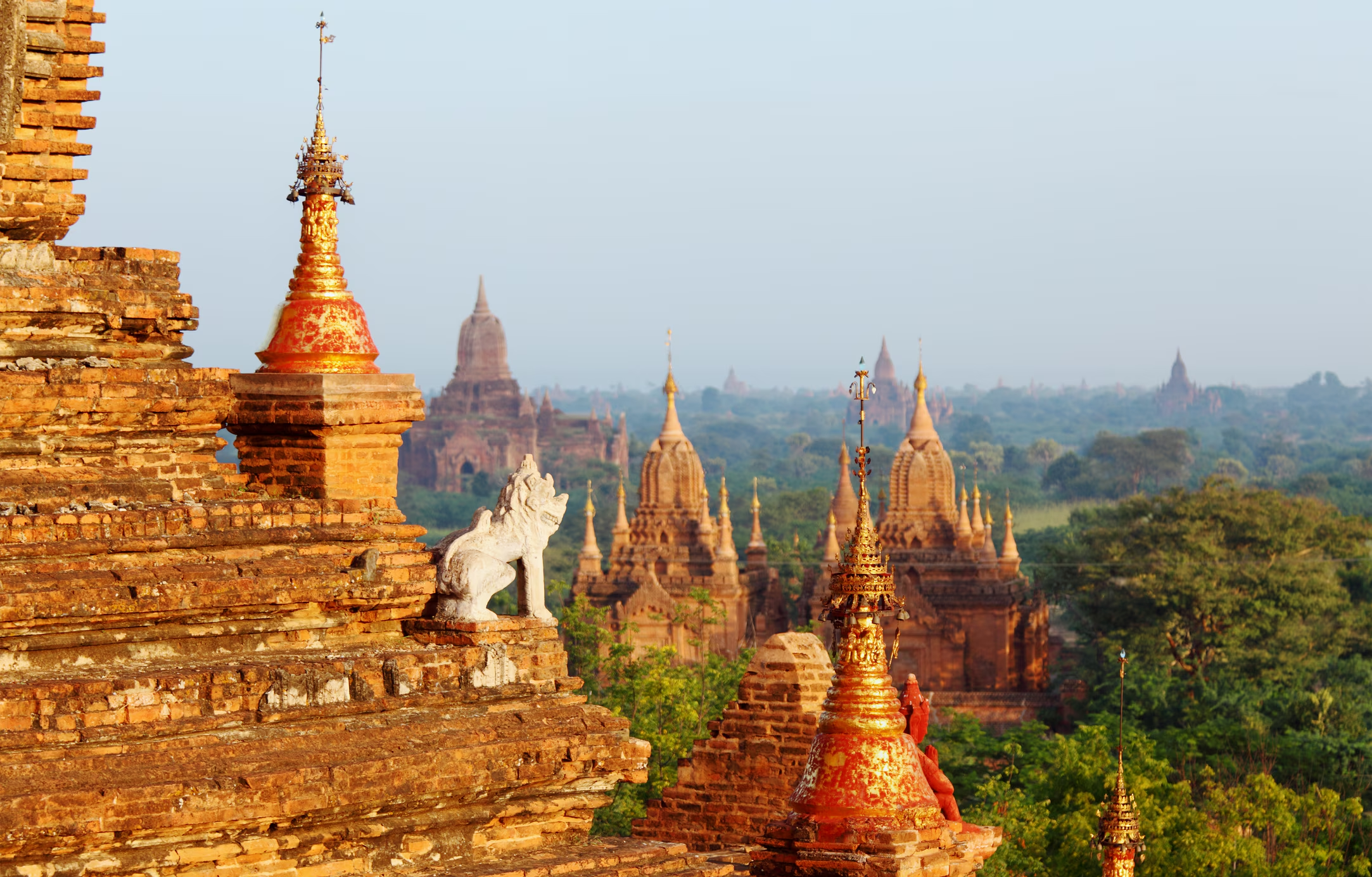
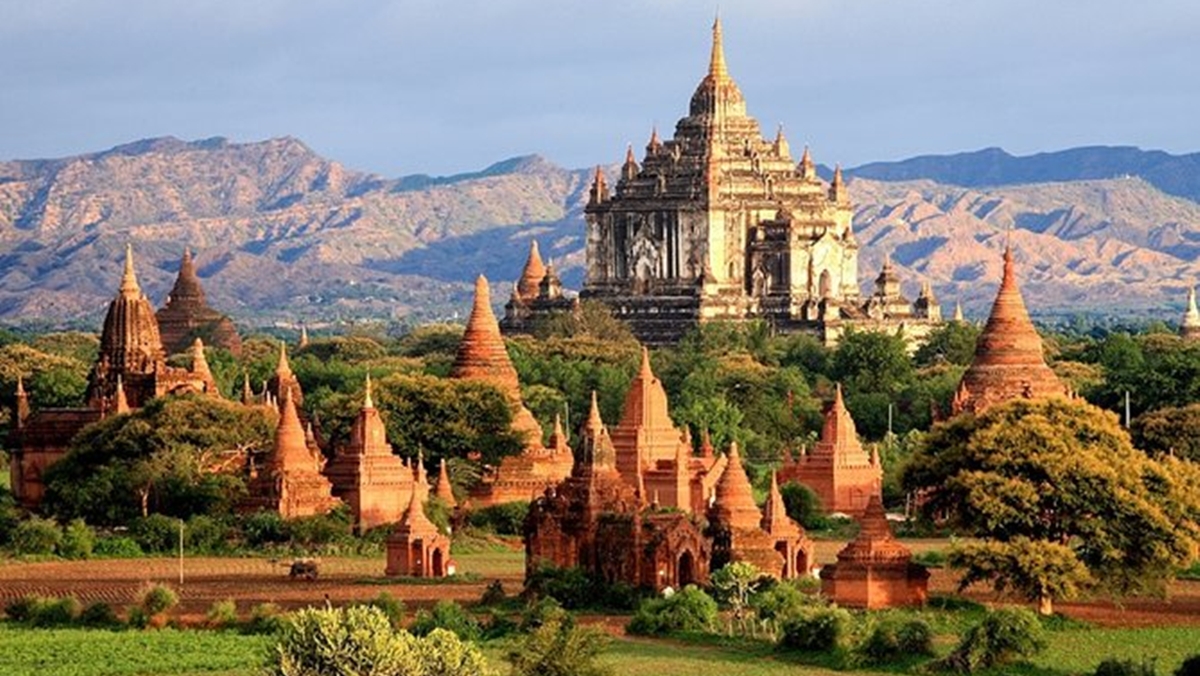
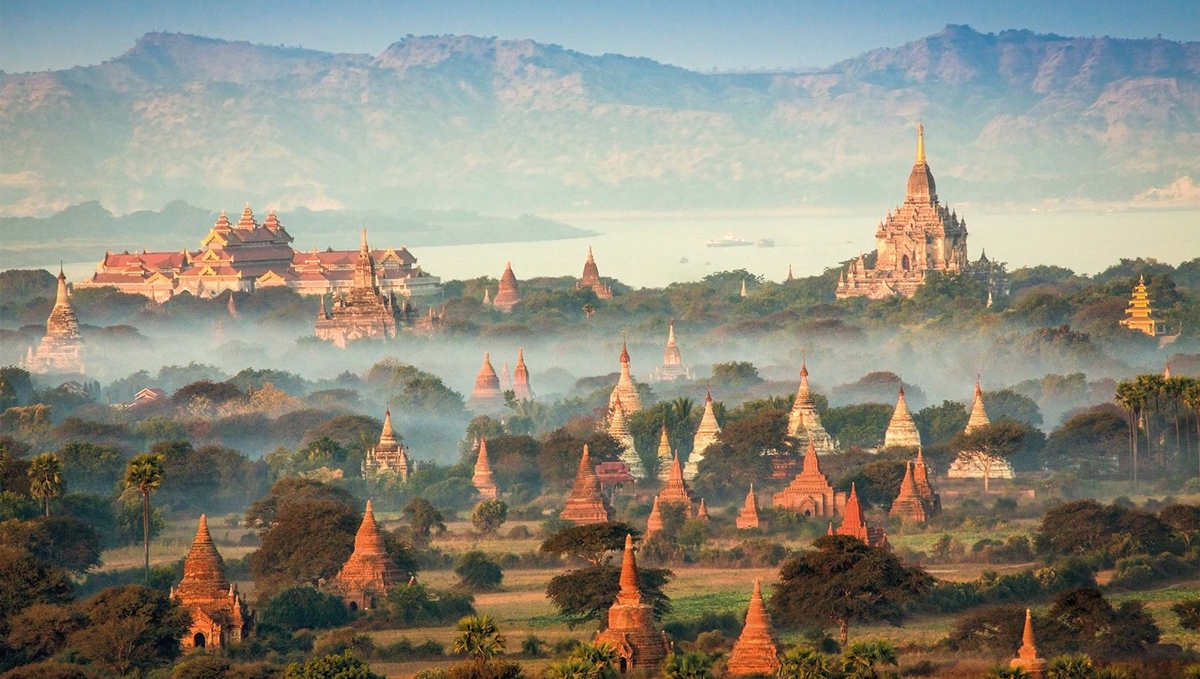
Bagan: Ancient Temples, History & Travel Guide of Myanmar
Bagan, often referred to as the “City of Pagodas,” is a mesmerizing destination that transports visitors back in time to an ancient world of towering temples, historic ruins, and mystical landscapes. Located in the heart of Myanmar, Bagan is home to over 2,000 temples and pagodas, many of which date back to the 11th and 12th centuries, when it was the capital of the Pagan Kingdom. This vast archaeological site stretches across a scenic plain, dotted with red-brick structures, offering a surreal and unforgettable experience.
The most famous of Bagan’s landmarks is the Ananda Temple, an exquisite example of ancient Burmese architecture. Its graceful, multi-tiered design and striking golden spire are awe-inspiring, while the temple’s interior houses stunning Buddha statues that seem to radiate tranquility. Not far from Ananda, the Shwezigon Pagoda is another must-visit, known for its golden dome and rich religious significance as one of the most revered sites in Myanmar.
One of the most unforgettable experiences in Bagan is watching the sunrise or sunset over the plains. From various temples and pagodas, visitors can catch panoramic views of the horizon, where hundreds of pagodas, big and small, rise from the earth like ancient sentinels. As the soft light of dawn or dusk bathes the landscape, the temples glow with a golden hue, making it feel like you’ve stepped into another era.
Exploring Bagan by hot air balloon offers a truly magical perspective. Floating above the temples as the sun rises, you can take in the scale and beauty of the entire archaeological zone—an experience that many consider a highlight of their Myanmar journey.
Aside from its temples, Bagan also boasts a rich cultural scene. The town has a number of local workshops where visitors can witness traditional crafts, such as lacquerware making and painting, which are integral to the area’s heritage. The nearby Nyaung U Market offers a lively atmosphere, with vendors selling fresh produce, handcrafted goods, and souvenirs, allowing you to immerse yourself in the daily life of this historic region.
Bagan’s unique blend of ancient history, spiritual significance, and natural beauty makes it one of the most remarkable destinations in Southeast Asia. Whether you’re a history enthusiast, a photographer, or someone seeking a peaceful escape, Bagan promises a journey through time that will stay with you long after you leave.
How to Get from Mandalay to Bagan.
Bagan, famous for its thousands of ancient temples, lies southwest of Mandalay, about 180 km away. Here are the best ways to travel:
1. By Bus – Affordable and Easy
Duration: 5–7 hours
Operators: JJ Express, OK Express, Mandalar Min
Cost: ~$6–$15 USD
Departures: Morning and night buses from Mandalay Highway Bus Station
Arrival: Bagan Shwe Pyi Highway Bus Terminal
✅ Comfortable VIP buses available with AC and reclining seats.
2. By Private Car or Taxi – Flexible and Scenic
Duration: ~4.5–6 hours (depending on stops)
Cost: $100–$150 (one-way, for a full vehicle)
Pros: Door-to-door, stop at Mt. Popa or small villages along the way
Booking: Hotels or local travel agents
✅ Best for families or small groups wanting flexibility.
3. By Train – Budget-Friendly but Slow
Duration: ~7–8 hours
Operator: Myanmar Railways (Train #117/118)
Cost: ~$2–$8 USD
Classes: Ordinary, Upper Class
Departures: Early morning from Mandalay Central Railway Station
⚠️ Expect bumpy ride and basic comfort.
4. By Boat – Most Scenic Option
Duration: ~8–11 hours (depending on river conditions)
Operators: MGRG Express, RV Panorama (varies by season)
Cost: ~$30–$50 USD
Season: Only available during high water season (Oct–Mar)
Departure: Mandalay jetty in early morning
Arrival: Near Nyaung U in Bagan
✅ Stunning views along the Irrawaddy River – ideal for photographers.
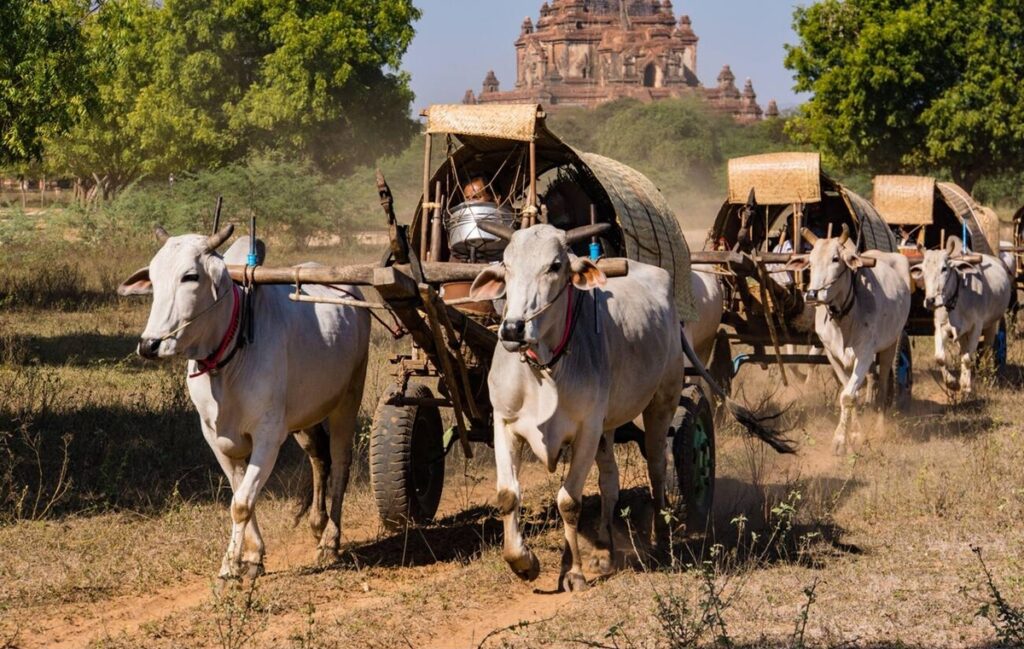
Festivals in Bagan,
Bagan, the ancient city of over 2,000 temples and pagodas, is not only a place of historical and spiritual significance but also a vibrant hub for traditional festivals that reflect the deep-rooted Buddhist culture of Myanmar. Festivals in Bagan offer a unique opportunity to witness centuries-old rituals, local traditions, and a sense of community that continues to thrive in this timeless landscape.
1. Ananda Pagoda Festival
One of the most significant and popular festivals in Bagan is the Ananda Pagoda Festival, usually held in January, during the month of Pyatho in the Burmese calendar. Celebrated at the iconic Ananda Temple, known for its perfect architectural symmetry, the festival draws thousands of pilgrims and visitors from across the country.
The event features:
Ox-cart caravans of villagers camping near the temple, creating a temporary festive village.
Traditional puppet shows, music, and dance performances.
Offerings of food and robes to monks as acts of merit-making.
A vibrant bazaar selling local crafts, snacks, and religious items.
The atmosphere is a blend of spiritual devotion and communal celebration, where ancient customs come to life under the golden spires of one of Bagan’s finest temples.
2. Full Moon Day of Thadingyut (Festival of Lights)
Though celebrated throughout Myanmar, the Thadingyut Festival, marking the Buddha’s descent from heaven, takes on a special ambiance in Bagan. The temples and pagodas are illuminated with oil lamps, and local residents light candles to show reverence and gratitude.
In Bagan:
Locals and pilgrims walk barefoot around pagodas in candlelit processions.
There are ceremonial offerings and prayers at major temples.
The flickering lights across the plains of Bagan create a magical and serene visual experience.
3. Thingyan (Burmese New Year Water Festival)
Occurring in April, Thingyan is Myanmar’s most joyful celebration, and Bagan, though more peaceful than urban centers, still joins the nationwide water festivities.
While Bagan’s version is less wild than Yangon or Mandalay:
Locals celebrate with water sprinkling rather than soaking.
There are traditional music and dance performances.
Monasteries host merit-making events, such as food donations and alms-giving.
Cultural Significance
Festivals in Bagan are deeply tied to Buddhist beliefs and the agricultural calendar. They serve both spiritual purposes—such as gaining merit and honoring the Buddha—and social ones, by bringing communities together. For visitors, attending a festival in Bagan is a rare chance to experience Myanmar’s living traditions amidst its historic grandeur.
For reservation for your accommodation:
